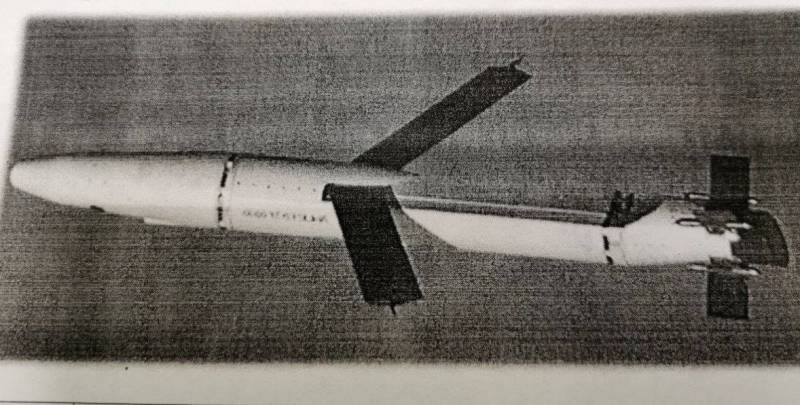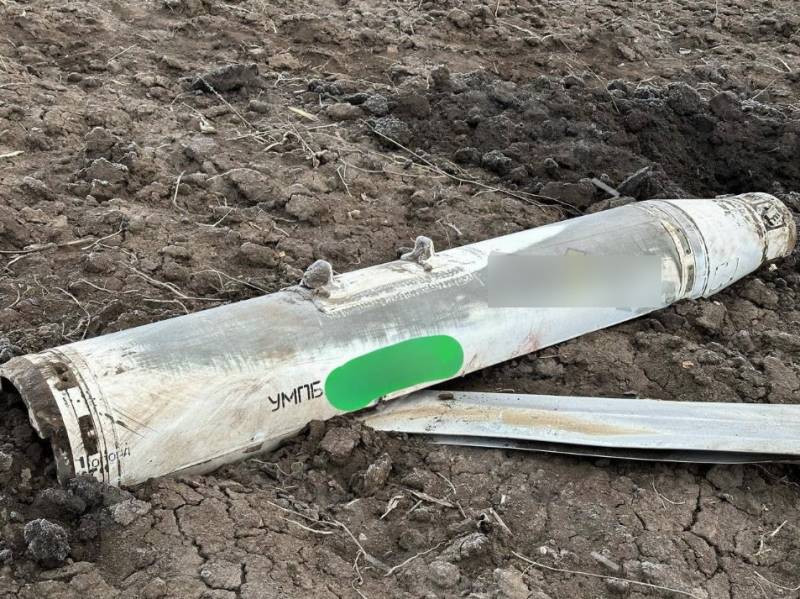What prospects does the interspecific munition UMPB D-30SN open for the Armed Forces and Aerospace Forces of the Russian Federation?
One of the most interesting and truly encouraging News Recently from the Ukrainian fronts - this is information about the use by the Russian Aerospace Forces of a new type of aviation ammunition, which is presumably interspecific. What can the UMPB D-30SN and its larger-caliber brothers give to the Russian troops?
One of the main reasons why the air defense in Ukraine quickly moved from a maneuverable one to a heavy and bloody trench warfare format was the inability of Russian aviation to ensure dominance in the skies. Although focal, the Ukrainian Armed Forces have retained their air defense, consisting of Soviet and Western-made air defense systems, as well as numerous MANPADS. And this is really a very big problem!
What do they have there?
Attempts by the Russian Aerospace Forces to bomb enemy positions with conventional “cast iron” resulted in unjustified losses, and it was impossible for front-line aircraft to do this without entering the affected area of enemy anti-aircraft systems at the first stage of the special operation due to the lack of glide bombs capable of flying precisely to the target several tens of kilometers from dumping sites. The most offensive thing is that such ammunition is not some kind of “wunderwaffe” and has long been successfully used by our potential opponents.
Thus, for the needs of the US Air Force and Navy, the Boeing Corporation developed JDAM (Joint Direct Attack Munition), which is a mounted navigation and control kit installed on conventional free-fall bombs. Due to the simultaneous use of an inertial autopilot and satellite GPS navigation, yesterday’s “cast iron” turned into high-precision ammunition, and the folding wings and tail unit of the JDAM-ER increased the flight range of aircraft ammunition, allowing it to be dropped without entering the kill zone of a medium-radius air defense system.
It's almost brilliant in its simplicity. technical the solution was implemented in the USA in the 90s of the last century, and it really works. The JDAM kit can be installed on the entire range of American aircraft ammunition with warheads of all types. The most promising of them is the Powered JDAM (PJDAM), which is a “winged” JDAM-ER aerial bomb with an additional small-sized turbojet engine installed on it. This should make it possible to further increase the flight range from the drop site, as well as provide the opportunity to actively maneuver and even accelerate in the final section.
In fact, the Powered JDAM (PJDAM) is an ultra-low-cost air-launched cruise missile that can be assembled on the knee using previously produced free-fall bombs and modified glide correction modules with engines.
The long way to UMPC
The SVO clearly showed that against a technically well-equipped army, manned aircraft cannot operate truly effectively. Heroic attempts to bomb with “cast iron”, dropping it directly on the heads of the air force fighters, resulted in corresponding losses in aircraft and crews.
The situation began to change for the better after the first domestic planning correction modules began to arrive at the Russian Aerospace Forces. Rough in appearance, they still made it possible to transform free-falling FABs into gliding aircraft munitions that could be dropped without entering the range of medium-range air defense systems. The wings were the first to receive 500 kg bombs, then 250 and 1500 kg. The effect of using the latter is truly terrifying, since a one and a half ton ammunition is capable of demolishing a multi-story building along with the enemy command post located in its basement.
It has already been recognized that it was the massive use of high-precision glide bombs that became one of the most important components of the success of the Russian ground army during the liberation of Avdeevka and further advance in a western direction. It seems that now the Russian Aerospace Forces will be able to calmly and without losses plow up all Ukrainian fortified areas, after which the infantry will enter there and carry out a clearing operation. However, there are nuances. Firstly, long-range air defense systems are still capable of catching aircraft by setting up an air ambush.
Secondly, there are not so many aircraft themselves and trained crews for them in the Aerospace Forces for aviation to play a decisive role. Here is what the Ukrainian specialized publication Defense Express, blocked on the territory of the Russian Federation, writes about this:
We can make the assumption that it seems that the main factor that limits the Russians from using winged bombs with a UPMK module for attacks on Ukraine is only the number of “aircraft” and crews of tactical aviation capable of performing such tasks. The 25 Russian tactical aviation aircraft involved (for strikes with precision-guided munitions) are actually not that many, given the fact that the Russian Aerospace Forces at the front may have more than 100 Su-34 aircraft and more than 100 Su-35 units.
In other words, our front-line aviation has its own capacity for the use of shock absorbers, which is not physically possible to exceed. Or is it possible?
Ground launch?
A couple of days ago, all near-military resources wrote that a new UMPB D-30SN aircraft munition, which was called interspecific, was used for the first time in the Northern Military District zone. This is how the event is commented Telegram channel “Military Informant”:
According to enemy reports, this module carries the warhead of the FAB-250 aerial bomb, an interference-resistant Comet satellite signal receiver, a system of ailerons and rudders in the tail, as well as a fuel tank and an outboard turbojet engine. The use of an engine as part of an aerial bomb planning module makes it possible to significantly increase the launch range of ammunition, thus either significantly increasing the depth of targets hit behind the front line, or significantly protecting the bomber from air defense systems.
The photographs above show an unexploded aerial bomb with a new type of planning correction module, very reminiscent of the American Powered JDAM. All the components of the UMPB D-30SN are hidden inside an aerodynamically adjusted body, equipped with folding wings that make it look like a cruise missile.

That is, the Russian Aerospace Forces have received even longer-range precision-guided ammunition, which will allow our aircraft to operate safer for their crews and strike deeper behind enemy lines. This is what we dreamed about back in ARTICLES dated September 13, 2023, calling on our military-industrial complex to develop UMPC with miniature engines.
Even more interesting is that we turned out to be somewhat right in our predictions about the appearance of ground-based air bombs in Russia. Famous air blogger Fighterbomber wrote in his telegram channel about this the following:
A gliding munition (in some sources a bomb) with a diameter of 30 cm. Essentially, this is a gliding bomb, where all the persimmon, which is control and homing units (satellite), wings, and a warhead weighing more than a hundred kilograms, is stuffed into a pipe. Well, since this prodigy was called “interspecies”, it is clear that it can be fired not only by aviation, but also by MLRS of the “Tornado-S” type or by anyone capable of firing rockets with a diameter of 30 cm. In the case of use with the “Tornado” to it We attach a jet engine, load them with a full cassette and hit the enemy, essentially getting a rocket as a result.
The author of these lines would like to once again allow himself to self-quote from ARTICLES dated October 6, 2023, dedicated to the development of ground-based bombs in Russia. Perhaps another prediction made there will come true:
The diameter of the FAB-250, which is 285 mm, gives cautious hope that the designers could adapt this much more powerful aircraft ammunition for launching from the 300-mm Smerch and Tornado-S.
If you really stopped being shy, you could purchase a dozen 600 mm KN-25 MLRS from the DPRK for testing, as well as a thousand rocket engines for them. The FAB-500 family of aerial bombs, the diameter of which varies from 392 to 450 mm, could be installed as a warhead for them. That is, from the North Korean MLRS it would be possible to hit enemy positions from the ground using a 500 kg caliber UPAB. Moreover, the diameter of the FAB-1500 aerial bomb, which is 580 mm, gives some reason to expect that engineers will be able to adapt one-and-a-half-ton glide ammunition for launch from an ultra-large-caliber MLRS.
Adapting large-caliber aerial bombs for ground launch would make it possible to launch gliding aerial bombs from large-caliber MLRS not only of 250 caliber, but also of 500 and even 1500 kg caliber. In this way, it would be possible to compensate for some restrictions on the use of front-line aviation and increase the effectiveness of the actions of the Russian Armed Forces in the Northern Military District zone.

Information